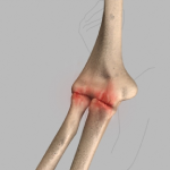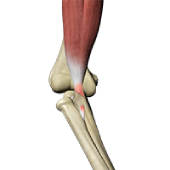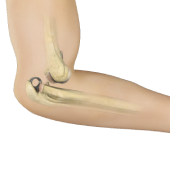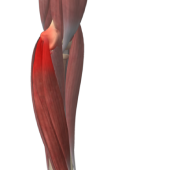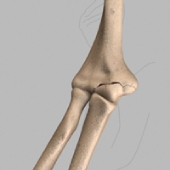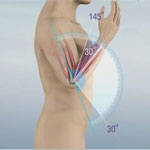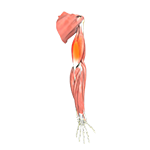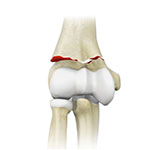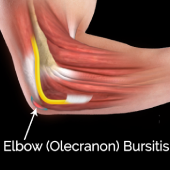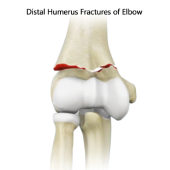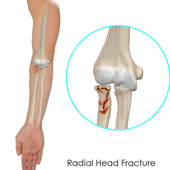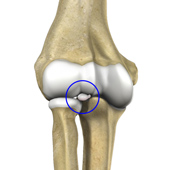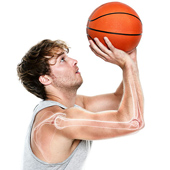Elbow Conditions
- Anatomy
- Conditions
- Procedures
Elbow Arthritis
Although the elbows are not weight-bearing joints, they are considered to be most important for the functioning of the upper limbs. Hence, even minor trauma or disease affecting the elbow may cause pain and limit the movements of the upper limbs. Arthritis is one of the common disease conditions affecting the elbow joint.
Bicep Tendon Tear at the Elbow
A biceps tear can be complete or partial. Partial biceps tendon tears will not completely break the tendon while complete tendon tears will break the tendon into two parts. Tears of the distal biceps tendon are usually complete and the muscle is separated from the bone. Tears of the distal biceps tendon most often result from a sudden injury or lifting a heavy object.
Elbow Dislocation
The arm in the human body is made up of three bones that join to form a hinge joint called the elbow. The upper arm bone or humerus connects from the shoulder to the elbow to form the top of the hinge joint. The lower arm or forearm consists of two bones, the radius, and the ulna. These bones connect the wrist to the elbow forming the bottom portion of the hinge joint.
Golfer's Elbow
Golfer’s elbow, also called medial epicondylitis, is a painful condition occurring from repeated muscle contractions in the forearm that leads to inflammation and microtears in the tendons that attach to the medial epicondyle.
Elbow Fractures
Elbow fractures may occur from trauma, resulting from various reasons: a fall on an outstretched arm, a direct blow to the elbow or an abnormal twist to the joint beyond its functional limit.
Elbow Contracture
Elbow contracture refers to a stiff elbow with a limited range of motion. It is a common complication following elbow surgery, fractures, dislocations, and burns.
Triceps Tendonitis
Triceps tendonitis is inflammation of the triceps tendon, the tissue that connects the triceps muscle on the back of the upper arm to the back of the elbow joint, allowing you to straighten your arm back after you have bent it.
Elbow Trauma
The elbow is a complex joint of the upper limb, formed by the articulation of the long bone of the upper arm or humerus, and the two bones of the forearm - the radius and ulna. It is one of the important joints of the upper limb and is involved in basic movements such as bending and extending the arm and rotating the forearm.
Elbow (Olecranon) Bursitis
Inflammation of the olecranon bursa leads to a condition called olecranon bursitis.
Osteochondritis Dissecans of Elbow
Osteochondritis dissecans is a joint condition in which a piece of cartilage, along with a thin layer of bone separates because of inadequate blood supply. The separated fragments are sometimes called “joint mice”. These fragments may be localized or may detach and fall into the joint space, causing pain and joint instability.
Distal Humerus Fractures of the Elbow
Injury in the distal humerus can cause impairment in the function of the elbow joint. A distal humerus fracture is a rare condition that occurs when there is a break in the lower end of the humerus.
Radial Head Fractures of the Elbow
Radial head fractures are very common and occur in almost 20% of acute elbow injuries. Elbow dislocations are generally associated with radial head fractures. Radial head fractures are more common in women than in men and occur more frequently in the age group of 30 to 40 years.
Loose Bodies in the Elbow
Your elbow is a joint made up of three bones held together by muscles, ligaments, tendons, and cartilage. It is both a hinge and pivot joint allowing you to bend and rotate your elbow freely. Loose bodies in your elbow are small pieces of bone or cartilage that have broken off and are lying or floating free within the joint. They can make elbow movement such as bending or rotation difficult.
Throwing Injuries
An athlete uses an overhand throw to achieve greater speed and distance. Repeated throwing in sports such as baseball and basketball can place a lot of stress on the joints of the arm, and lead to weakening and ultimately, injury to the structures in the elbow. These overuse injuries may include:


